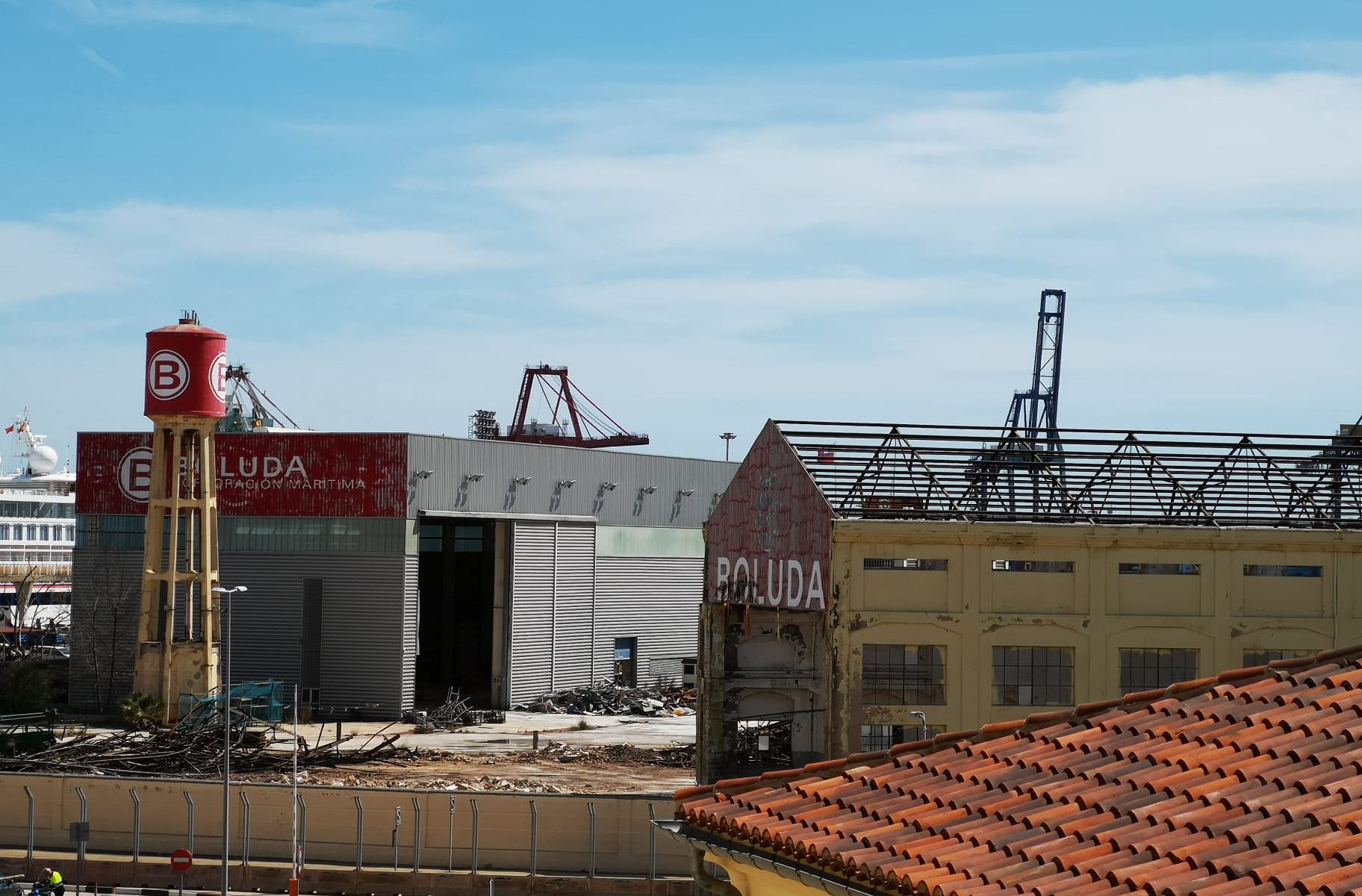
The design maintains the elements catalogued by the Demetrio Ribes Chair of Industrial Archaeology of the University of Valencia as pieces of historical and artistic value
The specifications for the new passenger terminal are the result of the consensus reached in December 2019 within the framework of the advisory committee of the Port of Valencia
València, April 8th, 2022.- The Port Authority of Valencia (PAV) has begun work on the refurbishment and adaptation of the site where the new public passenger terminal of the Port of Valencia will be located. Specifically, the buildings are being dismantled and restored and the area of the former Unión Naval shipyard is being cleaned up. The project for the new passenger terminal, which will be located between the Muelle de Poniente and the Muelle Perfecto Palacio in the area previously occupied by the shipyard, will occupy an area of approximately 100,000 square metres.
The design of this infrastructure will maintain all the elements of the old shipyard catalogued by the Demetrio Ribes Chair of Industrial Archaeology of the University of Valencia as pieces of historical and artistic value. Specifically, these are the water tank, the shipbuilding slipway, two cranes and sub-ship A of building III. The PAV is undertaking the refurbishment of the structure, front and roofs of this building, while the concessionaire will undertake the rest of the refurbishment to adapt it to its new intended use, respecting the architecture of the building and its west façade. It will be a historic and emblematic building of maritime Valencia that will continue to serve the city and its citizens – more than a hundred years after its construction – now with the most modern environmental technologies.
As stated in the refurbishment project, the dismantling will be carried out of building 2 (Tilling workshop) with 6,326 m2, building 4 (Prefabrication workshop) with 2,591 m2, and two smaller buildings for industrial, administrative and sanitary use with 129 m2 and 293 m2, respectively. Warehouse 7 (144.3 m2), Warehouse 8 (240.7 m2), Cantilever Crane, Medianería and Warehouse 3, which is divided into two parts, one with a total built surface area of 1,674.4 m2 and the other with 5,835 m2, will also be dismantled. The project also envisages the disposal of reusable goods from the steel block manufacturing area, metallic materials present in the rest of the building and the tiles that make up the roof.
The works are being carried out under special conditions due to the removal of materials such as asbestos, in accordance with the health and safety regulations applicable to work involving the risk of exposure to this material.
The specifications for the works on this infrastructure were drawn up within the framework of the Port of Valencia Advisory Committee of December 2019 chaired by the Mayor of Valencia, Joan Ribó. At the meeting, the requirements to be met by this new infrastructure were agreed. Specifically, it opted for an ecological, accessible terminal with good access for public transport. The new passenger terminal will be located on the former Unión Naval land and will respect the buildings listed as historic by the Demetrio Ribes Chair. The new station will enable cruise ships to switch off their engines and connect to the electricity grid when they are working in the port.
Sustainable terminal at the service of the city
The new passenger terminal is intended to serve cruise traffic, regular lines with the Balearic Islands and Algeria, as well as ro-ro traffic (platforms or vehicles which access the ships by their own means). This infrastructure guarantees that 100% of the electrical energy necessary for the operation of the terminal will be produced in the facilities themselves, and will be of renewable origin. According to the project presented by the PAV, which included the contributions of the València City Council in environmental matters, the passenger terminal will operate with zero polluting emissions and will be committed to the circular economy. In this sense, all berths will be equipped with an electrical supply network for docked ships, thus making it easier to stop the engines and their emissions when they are visiting València; and all the roofs of existing buildings will be designed for the installation of photovoltaic solar panels.
The terminal will recycle 100% of the waste it generates in a biomethane plant that will be built expressly for this purpose; and it will treat waste from the ships and the building itself to obtain biogas. The interior design of the station will ensure separate operations for cruise passengers and liner passengers.



